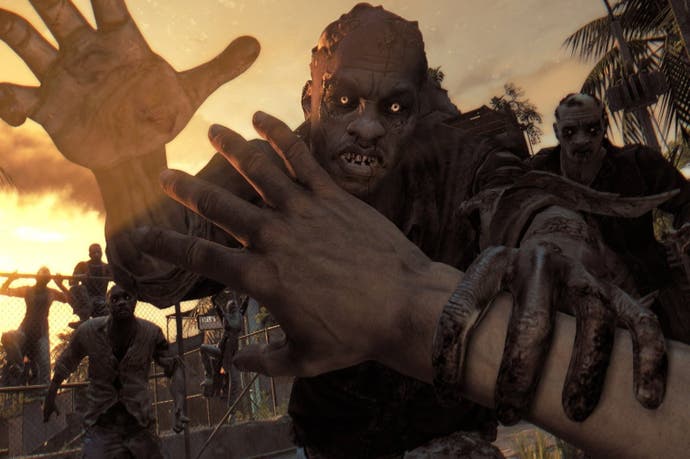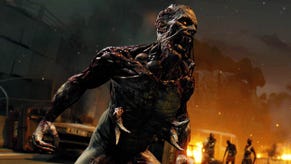Performance Analysis: Dying Light
Initial PS4 and Xbox One results from Digital Foundry.
With no chance to look at final code for Dying Light on any platform prior to its US release yesterday, it's safe to say that we're still in the early stages of our full multi-platform analysis - but we have played enough of the PlayStation 4 and Xbox One versions to offer up an initial look at game performance.
Running on Chrome Engine 6, Dying Light represents Techland's first efforts on current-gen hardware, with a focus on a truly open city built from assets designed to appear physically correct within the game's lighting system. Early last year, the developers boasted that they were targeting 1080p60 for both consoles but, this past December they rolled back expectations by admitting that 1080p30 was the final target. Previous Techland titles have exhibited somewhat unstable performance, occasionally running fully unlocked with a lot of screen-tear, so anything resembling a smooth, consistent update with a solid 30fps would represent clear progression from the studio.
As things stand, we're seeing a capped 30fps with a soft v-sync solution where torn frames are introduced when the game doesn't quite reach its target update. As an open world title, the performance is quite stable, feeling smooth and solid as you explore the massive environment. There is a tangible difference between the two versions when it comes to performance, though. By and large, the experience on PlayStation 4 is a locked 30fps with very minor dips in certain circumstances - at least based on our first few hours of gameplay, which includes a good amount of time running around the city looking for mayhem.
Thanks to an excellent motion blur implementation, the game feels surprisingly smooth and consistent. Torn frames are extremely rare on PS4, but they can occur, with dropped frames sometimes appearing instead when the performance slips a bit. There are also a select few instances on PS4 where the game jumps above 30fps for a brief moment while looking in a specific direction. It's not clear what is happening during these sections or why it's occurring, but it adds a bit of judder to the scene when it manifests. It's rare enough not to become a real issue but it is curious nonetheless. Still, by and large, the PS4 delivers a solid enough 30fps experience.
However, Xbox One falters a bit when it comes to sustaining its target frame-rate. Within a minute of taking control - in an enclosed area no less - we noted minor tearing along the top portion of the screen, which is rarely a good sign. Thankfully, once we hit the streets, things actually held together reasonably well, with the game holding 30fps most of the time. However, across the overall run of play, it's tangibly worse than PS4, with specific areas of the city and certain sequences operating at a lower level of performance on the Microsoft console.
In particular there is a grassy area early on in the game that sends the frame-rate under 30fps while simultaneously introducing torn frames. It's consistent enough overall not to dramatically alter playability, but these areas of slowdown are less than ideal and give the impression of a less polished experience. Based on the performance profile of the release software, it seems fair to say that the original 60fps goal would likely have been impossible to attain without some dramatic changes. Based on what we've played so far, we feel that Techland made the right call in favouring consistency over running its new engine fully unlocked.
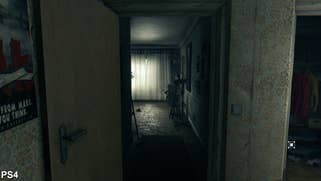
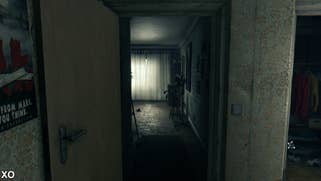
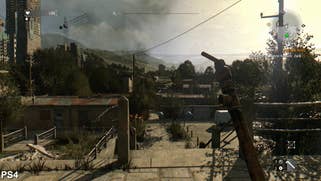

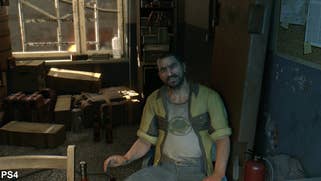

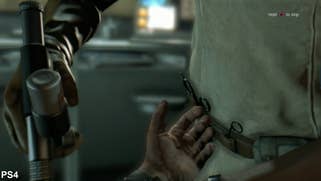
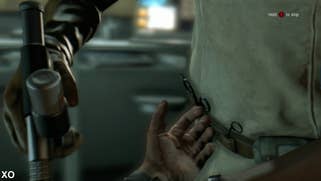
In terms of image quality, there is little to differentiate the two console versions of Dying Light visually. The team is apparently utilising a form of SMAA T2x, cleaning up edges reasonably well. However, the implementation is plagued with constant temporal ghosting artefacts: with the amount of motion across the scene, particularly with the exaggerated animations, these anomalies are quite noticeable throughout the experience.
Resolution-wise, there is a subtle difference in image quality between the two versions, with aliasing appearing slightly chunkier on Xbox One in certain situations. We're still working on a final resolution calculation, but we're inclined to believe the PS4 renders at full 1080p, while Xbox One is operating at a reduced 1536x1080 - or something very close to it. That's a basic 20 per cent drop in the overall pixel count. However, the PS4 version suffers from a disappointing lack of anisotropic filtering, with oblique angles producing much sharper texture work on Xbox One. The game is heavy on post-processing, making native rendering resolution much less of an issue that it would be in other circumstances, but with the reduced texture filtering on PS4 there are actually scenarios where the smaller framebuffer actually produces more detail-rich scenes.
We'll have a lot more to say about Dying Light in the coming days but it's safe to say that, at this point, the game runs consistently on PlayStation 4 with the Xbox One version lagging behind in certain areas, while image quality is close overall. We'll also be taking a look at the PC version of the game, which offers us the ability to scale well beyond the engine's console implementation. First impressions suggest a demanding title that seems to be CPU-limited, making it rather difficult to hit 60fps without dropping the distance slider down a great deal, but we'll have the full story later this week.
